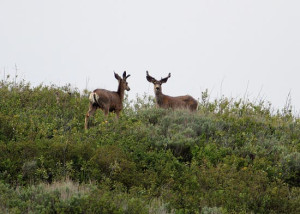Preseason Deer Scouting
If you put off learning your area until after the hunt has begun, then you’ll be at a serious disadvantage. As rule of thumb, you should spend at least twice as much time scouting as you do hunting. Scouting doesn’t mean just locating deer but locating crucial food and water sources, bedding areas, escapes routes, game trails, and other spoor. You don’t have to actually see a big buck to know he’s there; just watch for tracks and read the signs.
With today’s modern technologies, such as super-optics, video trail-cameras, GPS with topo maps, and 3D internet mapping, you can now scout anywhere in the country, 365 days a year, even late at night in your underpants after the wife goes to bed. But nothing beats boots on the ground. Physical scouting accomplishes two important things: first, you’ll become intimately familiar with the terrain you’ll be hunting on, and second, you’ll get plenty of crucial pre-hunt exercise while enjoying God’s natural splendors—and isn’t that what hunting is all about?
I can’t overemphasize the importance of quality optics; they are an essential part of scouting. Binoculars and spotting scopes open up the vastness of the mountain to your inquisitive eye, and quality optics will even open up the shadows during the crucial morning and evening hours when deer are likely to be out and moving. Remember, optics don’t have to be expensive, just effective.
Side Note: The binoculars I’ve been using for several years now are the Bushnell Legend Ultra HD 10×42
I chose these binoculars because:
- The glass is amazingly sharp for the pric
- The are designed to gather lots of light early and late in the day
- Waterproof and rugged design
- They are relatively inexpensive. I bought my Bushnell Legend binoculars at Amazon.com.


